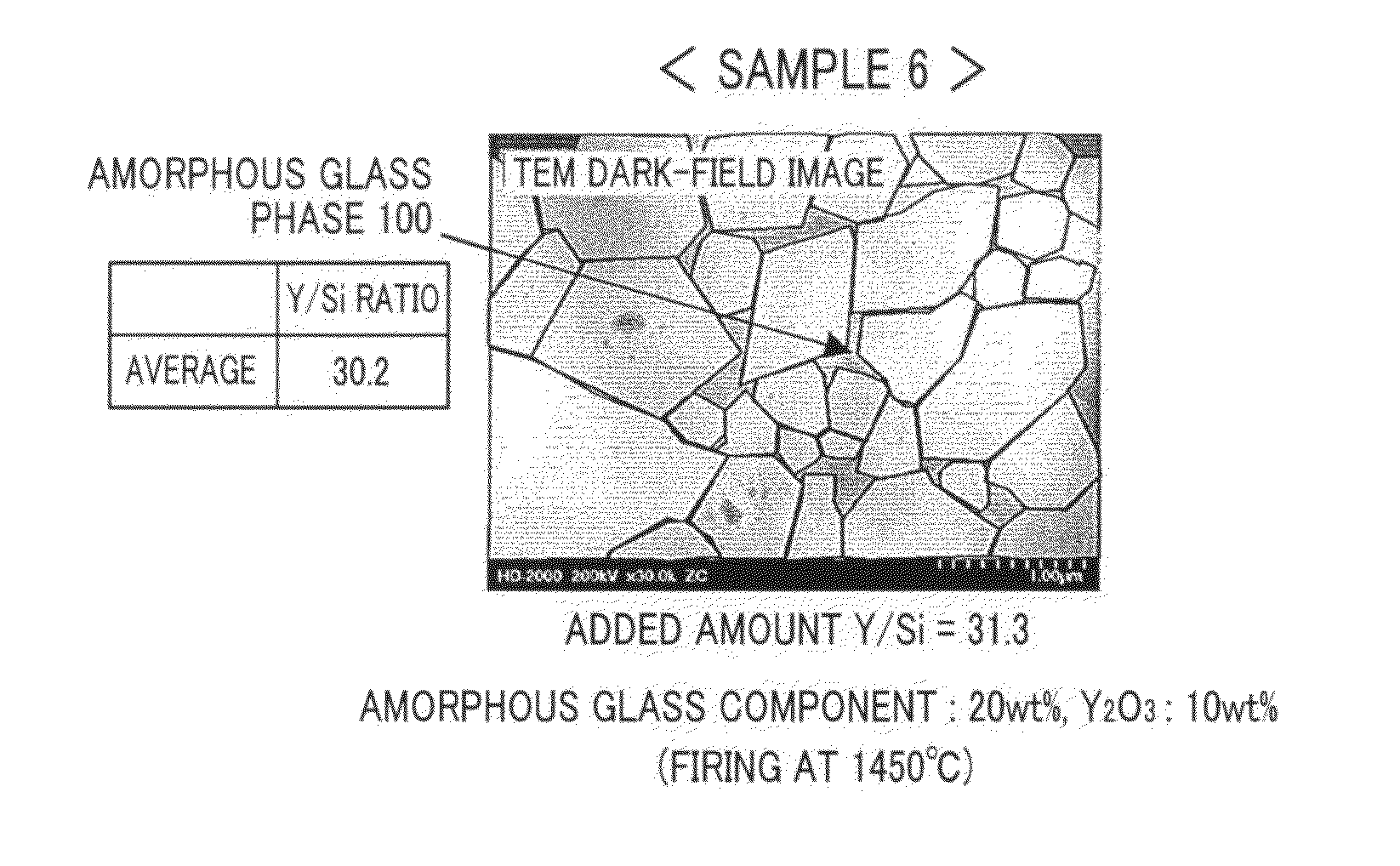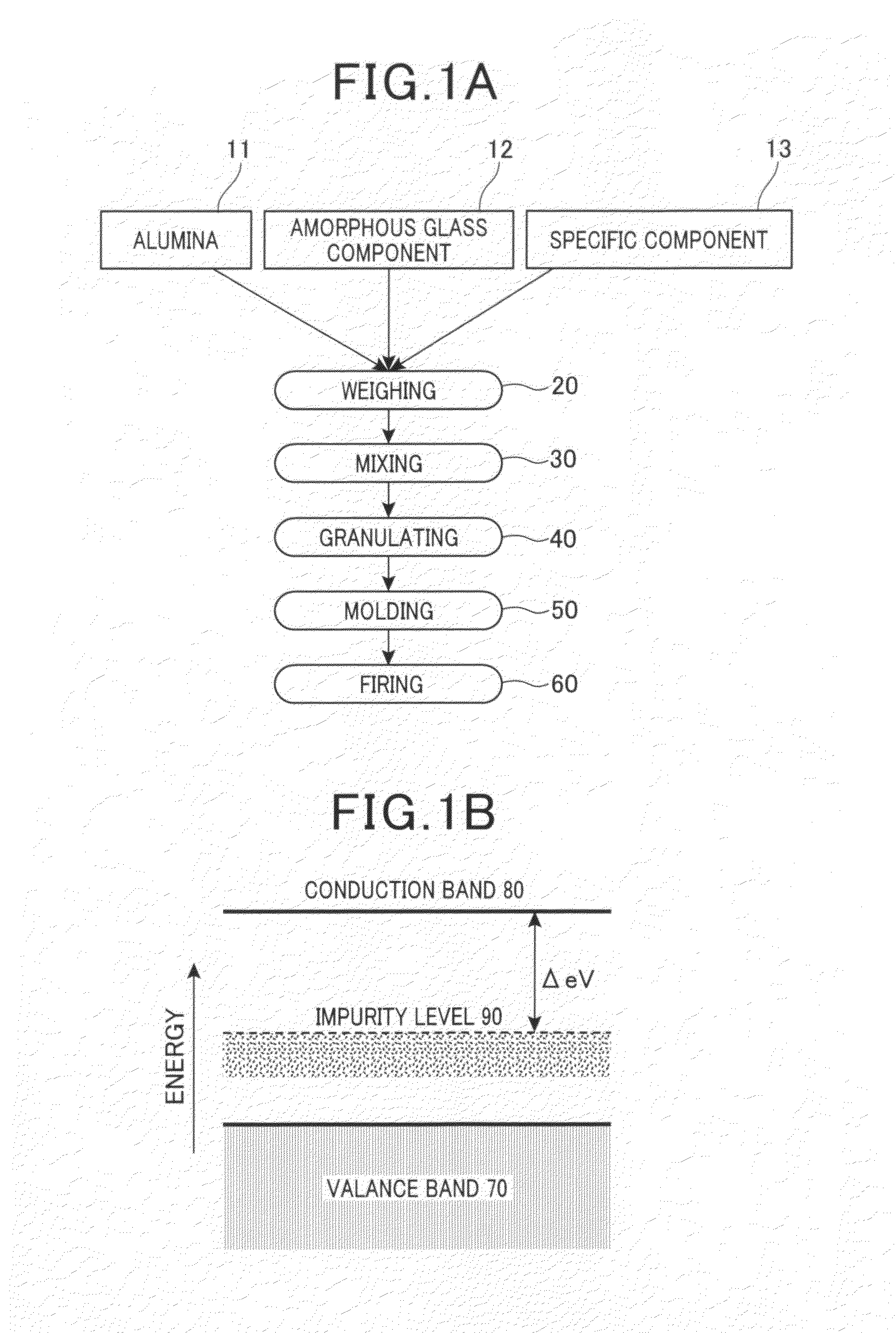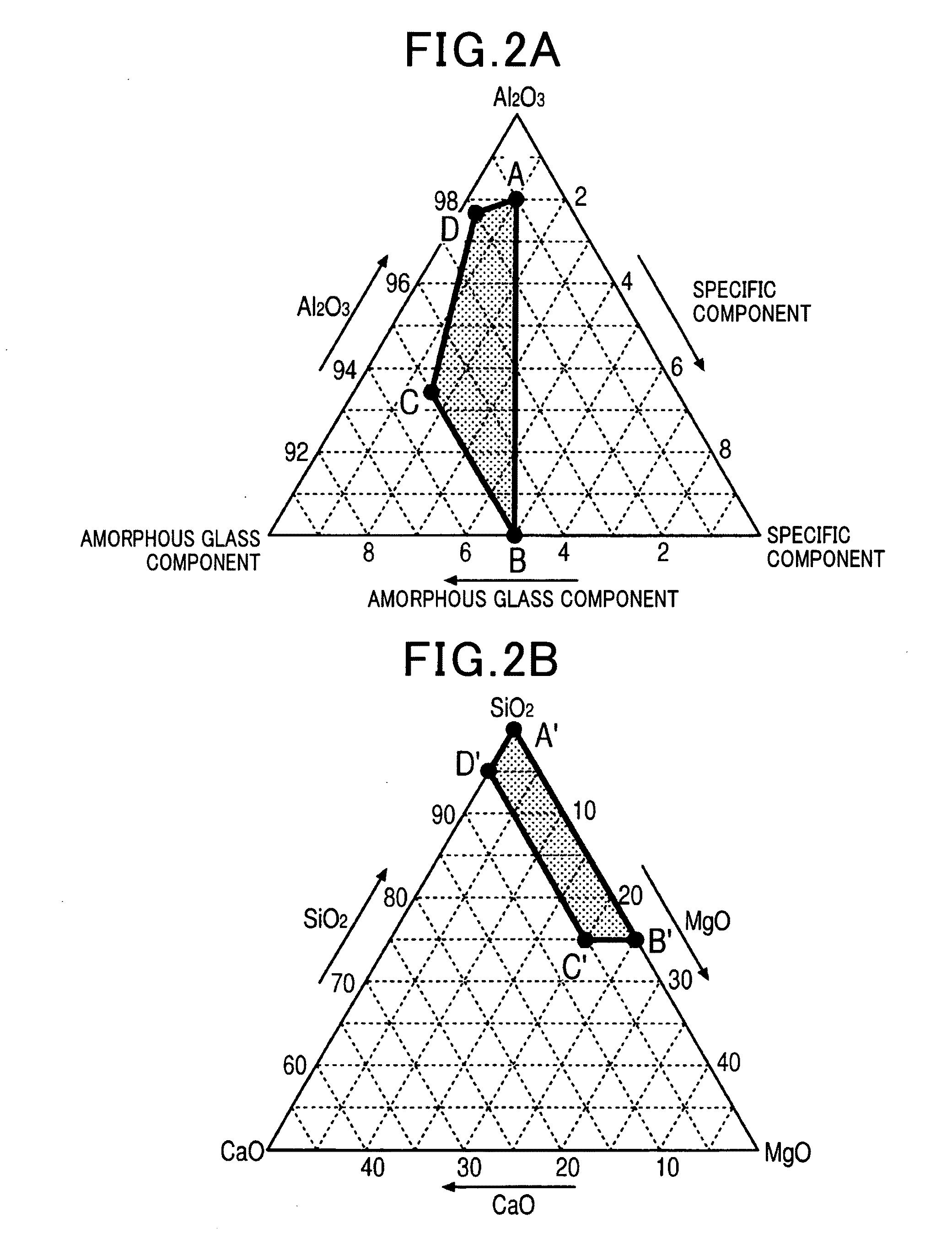Alumina sintered body
a technology of alumina and alumina, applied in the field of alumina sintered bodies, can solve the problems of deterioration of high-voltage endurance characteristics of siosub>2 /sub>, high temperature and long-term firing of grain boundaries, etc., and achieve the effects of reducing firing costs, improving voltage endurance, and reducing firing costs
- Summary
- Abstract
- Description
- Claims
- Application Information
AI Technical Summary
Benefits of technology
Problems solved by technology
Method used
Image
Examples
example 1
[0056]Alumina sintered bodies were manufactured based on the flowchart in FIG. 1A. Yttria (Y2O3) was used as the specific component. In the weighing procedure 20 in FIG. 1A, as raw material powders, alumina powder, silica powder serving as the amorphous glass component, magnesia powder and calcia powder serving as the impurity component, and yttria powder serving as the specific component were weighed to achieve mixing ratios of predetermined amounts indicated in Table 1A as samples 1 to 29. Specifically, as alumina powder, a fine powder with an average particle size of 0.5 μm and a purity of 99.9% or higher was used. As silica powder, magnesia powder, calcia powder, and yttria powder, fine powders with an average particle size of 0.1 μm and a purity of 95.9% or higher were used. The composition ratio of SiO2 that was the amorphous glass component, and CaO and MgO that were the impurity component was SiO2:CaO:MgO=86.9:10.2:2.9 (% by weight). For comparison, the specific component wa...
example 2
[0071]Next, alumina sintered bodies (samples 17 to 45) were manufactured by a similar method, with the composition ratio of the alumina powder, the amorphous glass component, and the specific component changed as shown in Table 3A, when the specific component was yttria (Y2O3). The composition ratio of SiO2 that was the amorphous glass component, and Cab and MgO that were the impurity component was SiO2:CaO:MgO=86.9:10.2:2.9 (% by weight). The composition contained 98% by weight of the alumina powder, 2% by weight of the amorphous glass component, and 1% by weight of the specific component, and hafnia (HfO2) and zirconia (ZrO2) were used in addition to yttria (Y2O3) an the specific component. In addition, the sintering temperature was 1450° C.
TABLE 3AWeight (wt %)Amount of amorphousSampleAluminaglass componentY2O31799.01.00.01898.50.51998.01.02097.51.52198.02.02298.02.00.02397.80.22497.50.52597.01.02696.51.52796.02.02895.52.52995.05.00.03094.50.53194.01.03293.51.53393.02.03492.03.03...
PUM
| Property | Measurement | Unit |
|---|---|---|
| Temperature | aaaaa | aaaaa |
| Percent by mass | aaaaa | aaaaa |
| Band gap | aaaaa | aaaaa |
Abstract
Description
Claims
Application Information
 Login to View More
Login to View More - R&D
- Intellectual Property
- Life Sciences
- Materials
- Tech Scout
- Unparalleled Data Quality
- Higher Quality Content
- 60% Fewer Hallucinations
Browse by: Latest US Patents, China's latest patents, Technical Efficacy Thesaurus, Application Domain, Technology Topic, Popular Technical Reports.
© 2025 PatSnap. All rights reserved.Legal|Privacy policy|Modern Slavery Act Transparency Statement|Sitemap|About US| Contact US: help@patsnap.com



